By Jim Campbell, ANN CEO/Editor-n-Chief/Test Pilot (Arrogant, Over-Opinionated Know-It-All/Test Dummy)
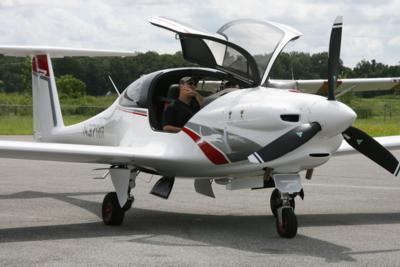
ANN E-I-C Note: Slowly… but… surely… the flight test series progresses… to the point where we are nearly finished. Let’s look at low-speed handling and landing manners before we get ready for the final report card, in Part Six. Thanks for sticking with us through all this… it’s been a zoo at ANN HQ (in a good way—BUSY!), but I wanted to make sure this was all presented as expertly as possible… which took more time than I readily had.
On to slow flight! I was really curious about this regime… as I had seen some amazing video of an IO-390 powered Panthera doing well in this regard, including aggressive multi-turn spins with all seats inhabited! While the commercial Panthera is NOT recommended for spins, I still got a lot of info, and insight/confidence from seeing that demo. And yes, i lioked what I saw.
OK… to do slow flight, ya gotta slow it down. NOT the Panthera’s strongest point.
Ya gotta get this beastie down to 106 knots for gear extension… and with that comes a LOT of (much) needed/welcomed drag. But, getting there is not the fastest process you can undertake in a Panthera – it takes a bit of prep and planning. While pulling power back produces the required diminishment in effective thrust, this particular prop combination is not that draggy, even when pulled most of the way back. So… Plan to spend the better part of a minute (or a little more) getting cleaned up, letting speed diminish, and work your way down to the magic 106 KIAS, so you can throw the gear out.
Now, while speed brakes would probably ease this chore a great deal, and certainly would be helpful on high speed descents if ATC decides to drop you like a brick; simple energy management will do the trick quite nicely. It just won’t do it in two seconds.
Gear extension offered good manners.
While there’s a little bit of yawing as each main deploys, the fully deployed gear produces a really lovely drag profile. Mind you, you’re going to get a bit of a pitch down trim change, easily trimmed out if you get tired of holding in a couple of pounds of aft stick, but the nice part is that with the gear down and power pulled back to the requisite level, you have a really nice drag profile that marries up with approach configurations really well.
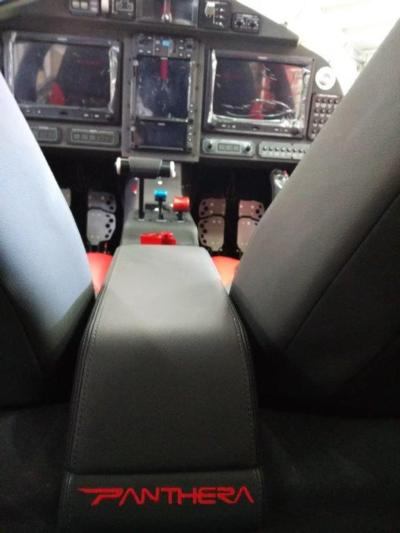
Okay… Onto slow flight and stalls. As I mentioned before, I had high hopes for the low-speed profile of the Panthera, and I was not disappointed. Getting into an approach configuration was started with an initial 15° flap deployment, and a little bit of re-trimming, again, but also not as much as one would have expected when you look at the ratio of flap area to wing.
Going to an approach flap configuration of 45° does produce a much more significant pitch down trim configuration, requiring more aggressive retrimming, unless you’re willing to hold five or 6 pounds of aft stick for a bit. It’s not a lot of work… not like a fast reconfiguration to approach mode in a Cessna 182 (which builds a lot of muscle over time...) if you still have it trimmed for cruise. There is a noticeable falloff in stick forces, particularly in roll and pitch, as you decelerate from 100 knots down into the 70 knot range, as expected. This produces light but none-the-less obedient responses that contribute to a very pleasant workload when configuring for approach. The force gradient falloff is a good 30 to 40% depending on the axis -- from those that we sampled while in cruise.
I worked my way down to the 60 knot range with power pulled back to idle, and a slow pitch-up rate of about 1° per second, and noted that Garmin’s AOA decided to came alive and provide some guidance, but I found the Garmin’s sligtly clumsy architecture for their flat-panel displays, when it came to angle of attack, left something to be desired. Aspen does a far better job with their AOA equipped displays.
The initial stall, when approached slowly, was a fairly common and simple experience.
It was symmetrical, didn’t give us a whole lot of warning, and offered a light high-frequency root buffet as we got close to the critical AoA. While we weren’t doing anything to antagonize the stall, at least this first time around, I noticed (in subsequent investigations in a smilary regime) that half ball and full ball yaw deviations produced no aggressive intent from the airplane to fall off to either side, and while it did yaw a little bit in sympathy with the control input, there was no indication at any point that was setting itself up for an inadvertent autorotation. Good.
While holding a significant angle of attack, but again having gotten there at a low pitch acceleration rate, the initial break was pretty mild. In this configuration, the Power-off, ‘dirty,’ stalls occurred between 55 and 58 knots. Recovery was a simple matter of releasing pitch pressure, and adding power. The airplane seemed happy to start flying pretty quickly.
Thereafter, we approached stalls with a far more aggressive pitch rate, on the order of 3° or more per second, again with idle power, and allowing for a more aggressive angle of attack by the time the airplane gave up the ghost. There was still a fair amount of positive pitching inertia as we approached and flew into the break, which resulted in a sharper 35° to 40° pitch down at the onset of the high-frequency low amplitude (limited) buffet that preceded the point at which the airplane stalled. The stall broke a little bit to the left, was easily countered by only mild right rudder, and again started flying fairly quickly with proper recovery. Again, we experienced no indication or inclination toward an uncommanded autorotation.
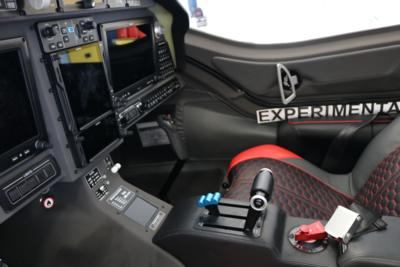
Stalls attempted in a cleaned up configuration, i.e., gear-up/flaps-up, were not quite as mild, but then again, not obnoxious, either. Heck, they were kind of wimpy, by most high-performance airplane standards (i.e., Lancair IV, etc.). We took these through to the stall buffet and into a proper recovery at the initiation of the break, noting a more pronounced high-speed root buffet of light to moderate amplitude, and with the same lovely response from yaw and roll we experienced in previous stall investigations -- all the way into the break. We were plainly well under control even through the stall. Plainly put, while the Panthera looks kinda mean when you first see it, especially in profile, it showed no untoward tendency to bite you in the low-speed regime. Mond you; there are ways to antagonize such aircraft and I would welcome the chance to push it a little more at some point in the furture to see if I can get it to show off something less than the genteel manners we documented.
Again, we’ve seen some pretty extraordinary video of some of prior flight test work that had been done by Pipistrel HQ in Slovenia… Where a Panthera equipped with the Lycoming IO-390 engine, and four people on board, were put through a pretty aggressive spin series. This aircraft is not certified for such, but the demonstrations I’ve seen look pretty impressive, and at some point, I would love to duplicate the test—with some limitations.
I’d love to try a similarly loaded test aircraft, but with equivalent weights substituted for real passengers, because airframe parachute system or no airframe parachute system, spins can often be weird unpredictable animals. One of my favorite conversations with my dear friend, the late Bob Hoover, was that no matter how well you thought you had defined the spin matrix of any particular airplane, it still had the annoying tendency to reach out and bite you in the ass when you least expected it. Bob found this out in his beloved Shrike, at an air show, after spinning the airplane literally, hundreds, maybe thousands of times… And it was the last time he spun the Shrike in a show – because the recovery was not what he had experienced ever before. And that was enough to convince him that it was time to quit semi-low-altitude airshow spins.
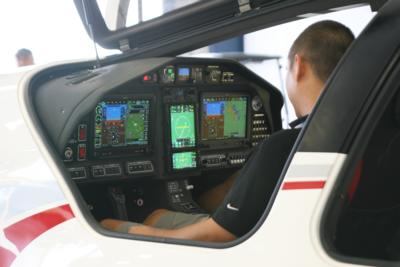
So… While I’d like to have the same payload, I don’t see much of a point in spinning an airplane with passengers, even if they’re fully qualified to be there, because if the spin recovery doesn’t work out, it’s a mad scramble to either recover the aircraft another way, or get the hell out of Dodge. And again, everything we experienced in the Panthera to this point, convinces me that the spin series in this airplane would probably be a nonevent… Unless Mother Nature decided it was your day to get you.
Okay for those of you who have been suffering through Part One through Five of the Panthera flight test series, and the rather extensive data we have presented (because we believe that you deserve massive detail), I’m pleased to tell you were getting to the end of the story…
Due to the very warm conditions we were working in, and the fact that cockpit ventilation hadn’t been fixed yet, as previously noted, we were starting to get pretty toasty – and I’m not a fun guy to be around when I start sweating. So; despite the fact that I was having some warm sweaty fun with the Panthera, it was time to take pity on Andy and head for the barn.
So… On to the approach.
Again, take a little bit of time to slow the airplane down properly, throw out gear below 106 knots, deploy the first 15° of flaps in order to provide some additional drag to help with speed control and start working your way down to a little bit under 80 knots. This feels awfully slow in the otherwise speedy Panthera, and it takes a minute or two to acclimate yourself to the fact that this is a proper approach speed and profile.
Unlike a lot of other high-performance aircraft, you do not need to come screaming in at 100 knots or more to keep from plastering yourself all over the runway. It’s a hard, initial, lesson to learn in a high-performance aircraft, and I remember spending an hour or two in my Glasair III, before I had the confidence in the seat-of-the-pants feel for how that aircraft best approached an imminent landing at anything below Mach One (or so it felt).
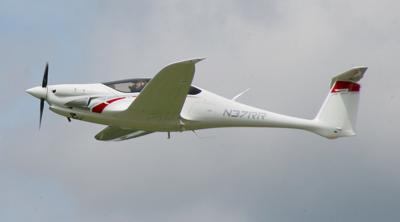
Again; if you’ve managed to get yourself under 100 knots, drop gear, and get that first flap gradient deployed, you’re gonna wind up with a pretty decent site picture over the nose, a little flatter than normal, but still better visibility than we obviously experienced in the climb… And, if you need a little help, the Panthera slips OK... but a modest slip does not produce a lot of drag or sink... you need to be more aggressive to get it to sink like Cessna... And what you really need to start thinking about, is getting yourself under 90 in the pattern, 80 on the base, and set yourself up for 75 knots turning final with about 70 knots as you cross the threshold.
Unfortunately; I didn’t do that – at least not right away.
As previously noted I stayed a little conservative on the speeds, and was fast on downwind, still a little too fast on base and then finally fixed everything on final to the point where we actually had to add a little bit of power to arrest the descent rate. The final part of the landing sequence is a pure joy thanks to trailing link landing gear. There is a reason why pilots all over the world love this gear system… Because it makes you look good, no matter how bad you are. I used about a 5° pitch up flare, fairly mild, and let it fly onto the runway. It needs a fair amount of rudder as you pitch up, to maintain proper directional control as rudder becomes pretty dominant as you approach and get into the flare. About 70 knots over the fence will set you up for a really nice touchdown, with a couple of pounds of aft stick pressure, and letting it fly onto the runway from a low flare. This is not a floater and thank God, it is not a bouncer (saved my rep).
We actually had a long way to go down the runway, so I wasn’t that aggressive on initial breaking but regardless of that fact, we were turned, and off the runway in under 1500 feet, and I felt that more diligent braking, but not too aggressive, would easily have put us under thousand feet. Unlike a number of other high-performance aircraft, this baby does not eat up runways for lunch… Or breakfast for that matter. It made me look good… and I like that in an airplane.
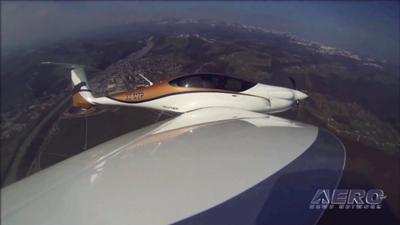
Overall, we did a little bit over an hour from start to finish, and it went by way too fast, while producing a much higher comfort factor throughout the entire flight test than I expected, and I have to admit to feeling fairly pleased with the result. I look forward to flying this airplane again... and more aggressively (above and beyond conventional flight test protocols) when time presents itself.
NEXT: Okay we’re pretty much done with this magnum opus… In Part Six, we will present a summary and a report card, which will attempt to break down the highs and lows perceived from the flight test. We’ll discuss the stuff we really liked, as well the stuff that didn’t quite meet our standards, and give you a final overview of what is undoubtedly going to be one of the more exciting new high-performance sport aircraft on the market for quite a while.
Stay tuned…



 Aero-News: Quote of the Day (04.17.24)
Aero-News: Quote of the Day (04.17.24) ANN's Daily Aero-Linx (04.17.24)
ANN's Daily Aero-Linx (04.17.24) Airborne-Flight Training 04.17.24: Feds Need Controllers, Spirit Delay, Redbird
Airborne-Flight Training 04.17.24: Feds Need Controllers, Spirit Delay, Redbird Airborne 04.16.24: RV Update, Affordable Flying Expo, Diamond Lil
Airborne 04.16.24: RV Update, Affordable Flying Expo, Diamond Lil Airborne 04.11.24: SnF24!, King's 50th, Top Rudder, Aileronics
Airborne 04.11.24: SnF24!, King's 50th, Top Rudder, Aileronics











